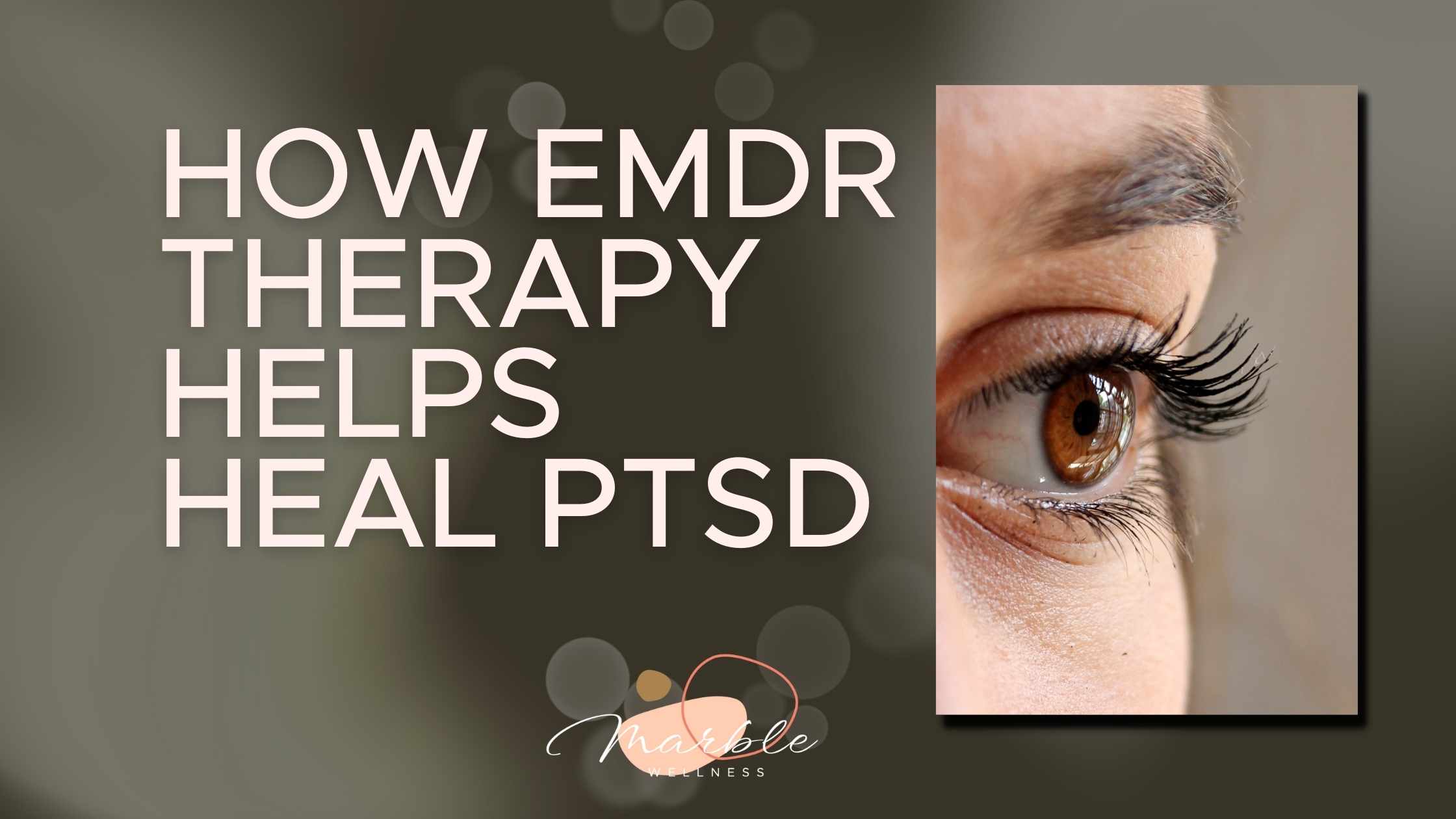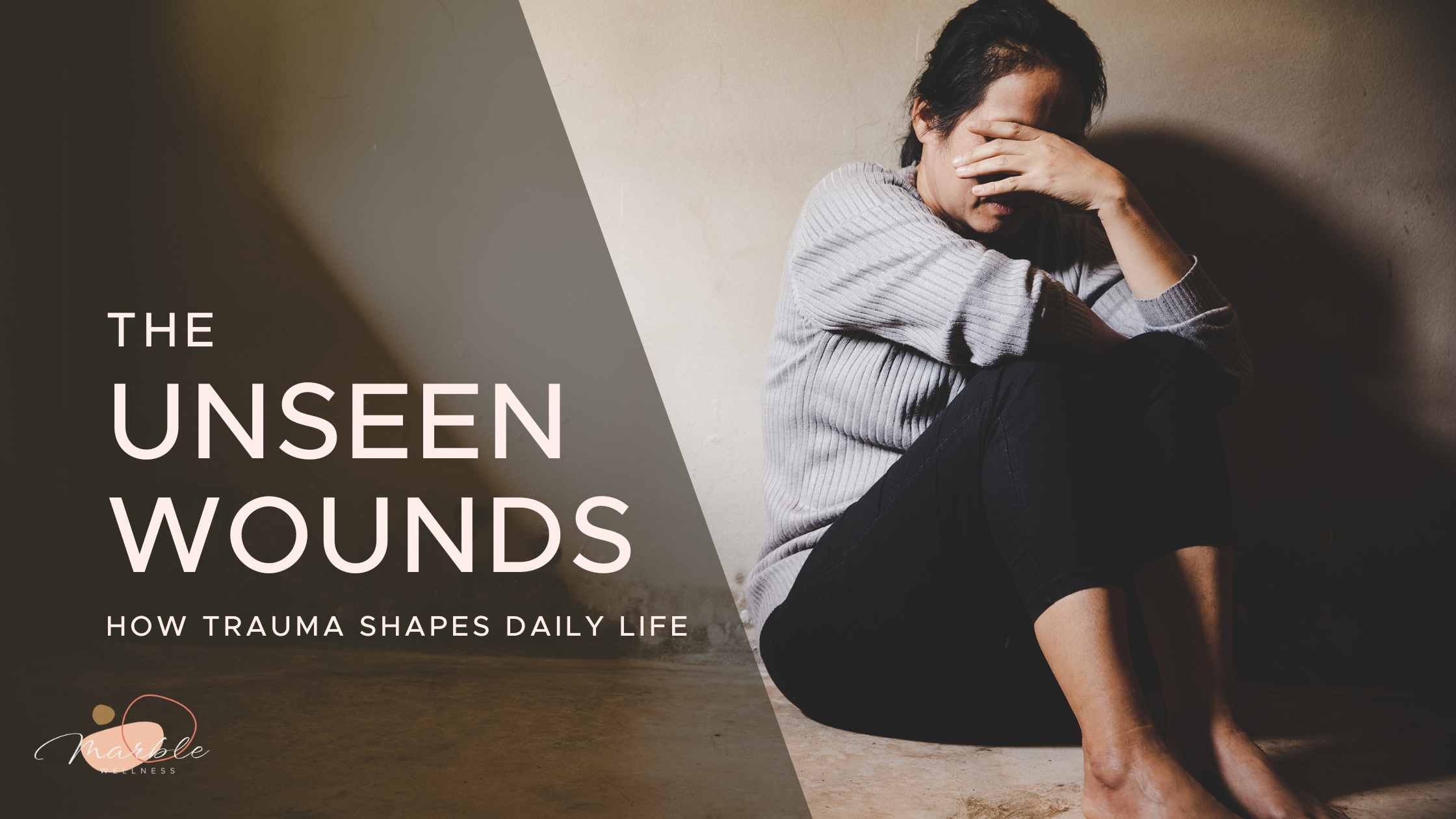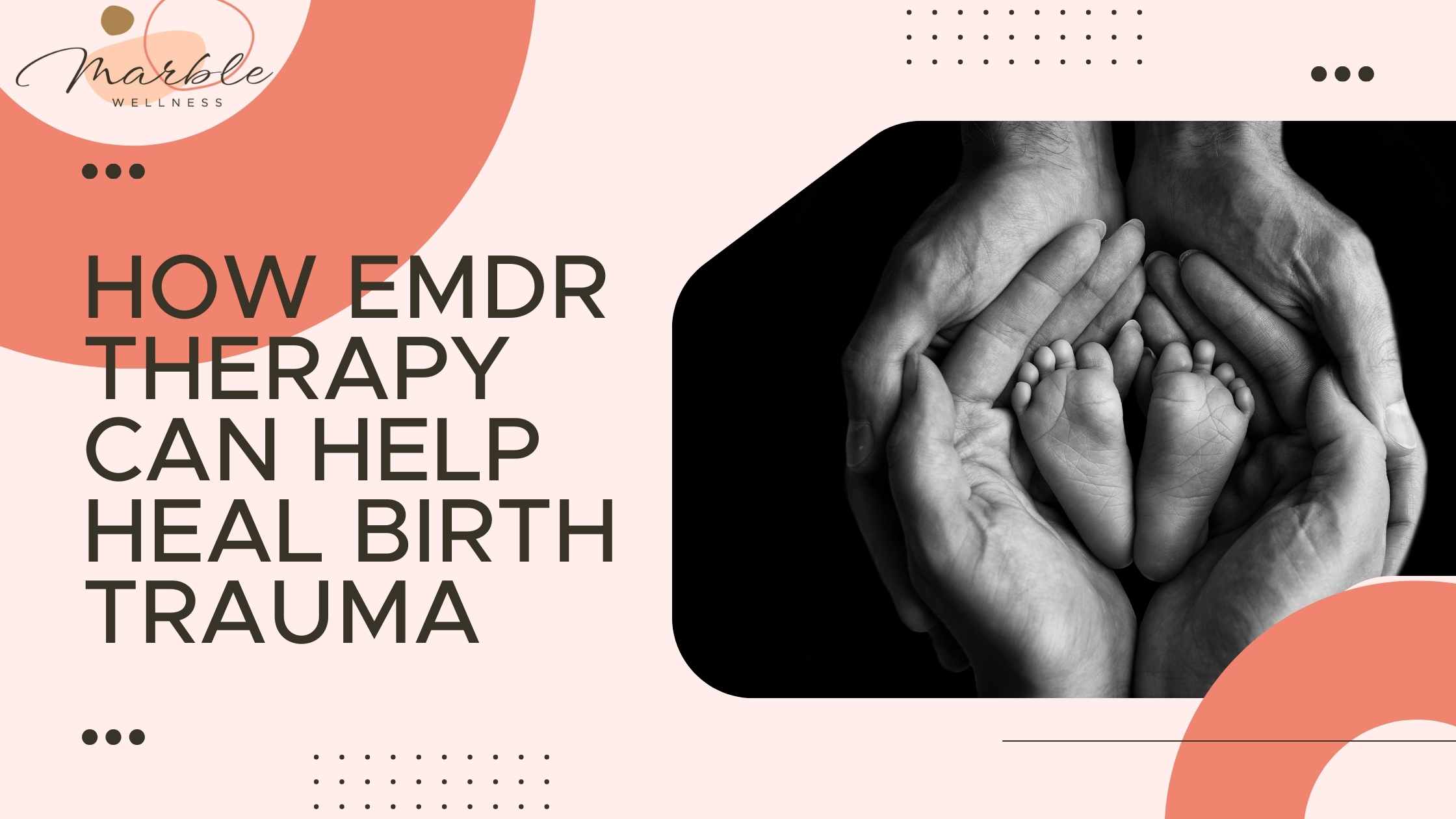Okay, we’ll be honest—Eye Movement Desensitization and Reprocessing (EMDR) does sound a little strange if you’re not in the mental health field. Eye movements? Trauma healing? How does that even work? You’re not alone in wondering! Let’s break it down step by step, in a way that makes sense and feels approachable.
What Exactly Is EMDR Therapy?
At its core, EMDR is a trauma-focused therapy that helps your brain heal from emotional wounds—kind of like how your body naturally heals cuts or scrapes. When you experience something traumatic, it can get “stuck” in your brain, like a splinter that hasn’t worked its way out. That stuck memory might show up as intrusive thoughts, overwhelming emotions, or physical symptoms like anxiety or tension.
What makes EMDR unique is how it taps into your brain’s natural ability to process and heal from those stuck experiences. During an EMDR session, your therapist might ask you to focus on a specific memory while guiding you through bilateral stimulation—like following their hand with your eyes or tapping gently on each side of your body. This back-and-forth movement helps your brain reorganize the way it stores that painful memory, making it feel less intense over time.
What the Heck is Bilateral Stimulation?
Let’s pause for a second on the term “bilateral stimulation.” It might sound like something out of a sci-fi movie, but it’s really just a fancy way of describing back-and-forth movements or sensations that engage both sides of your brain. Think of it like a mental ping-pong game: your attention moves from one side to the other, helping your brain do some serious processing work.
In EMDR therapy, bilateral stimulation can happen in a few different ways. One common approach is eye movements—your therapist might guide you to follow their hand or a light bar as it moves side to side. But eye movements aren’t the only option. BLS can also include gentle tapping (on your hands, knees, or shoulders) or sounds (like tones alternating between your left and right ears).
So why does this matter? Scientists believe bilateral stimulation helps activate both hemispheres of your brain, which can get “stuck” or disconnected when you’re holding onto trauma. Trauma memories are often stored in the emotional part of your brain, and they can feel overwhelming or impossible to process. BLS helps bridge the gap between the emotional part of your brain and the logical, problem-solving part, allowing the memory to be “filed away” in a healthier, less intense way.
It’s a bit like organizing a messy drawer. Trauma keeps everything jumbled, so every time you open the drawer (or think about the memory), it feels chaotic. BLS helps your brain sort through the mess, putting things where they belong. Afterward, you might still remember the event, but it doesn’t feel as raw, scary, or overwhelming.
Bilateral stimulation may sound simple, but it’s one of the key reasons EMDR is so effective. It’s not about “erasing” memories; it’s about giving your brain the tools it needs to make peace with them.)
It might sound unusual, but here’s the thing: EMDR is backed by decades of research and is recognized as one of the most effective therapies for trauma. Scientists believe the bilateral stimulation mimics the brain’s natural processing that happens during REM sleep—the stage where your brain sorts through the events of your day. EMDR helps the brain do this same kind of sorting and healing, but with painful memories that feel stuck.
If it feels a little out there, that’s okay. Lots of people feel the same way at first. What’s important is that EMDR works, and it’s helped millions of people worldwide reclaim their sense of calm and safety.
“It Sounds Weird…Does EMDR Really Work?”
You’re not alone if you’re thinking, “Wait, moving my eyes around can help me heal from trauma? Really?” Many people feel skeptical when they first hear about EMDR—it’s not your typical talk therapy. The idea of following lights or tapping while revisiting difficult memories might sound strange or even uncomfortable at first. And that’s okay!
Here’s the thing: EMDR is backed by science, with decades of research showing how effective it can be. The “weird” part—like moving your eyes back and forth or listening to alternating sounds—plays a critical role in how the brain processes trauma. It may feel unfamiliar, but the results often speak for themselves.
“I’m Nervous About Reliving the Trauma”
One of the biggest hesitations people have about EMDR is the fear of having to relive their most painful experiences. That fear makes so much sense—of course, you want to avoid going back to those moments. The good news is, EMDR isn’t about throwing you back into the deep end of those memories.
With the guidance of your therapist, you’ll revisit the memory in a controlled and safe way. You won’t be re-traumatized because the focus isn’t on reliving the experience but rather on processing it so it doesn’t hold the same power over you anymore.

“What If EMDR Doesn’t Work for Me?”
It’s natural to wonder if EMDR will really help. Everyone’s healing journey is unique, and no single therapy works for absolutely everyone. But many people who have felt stuck with other approaches find that EMDR helps them break through in ways they didn’t expect.
Your therapist will take the time to assess whether EMDR is a good fit for you before diving in. And if it turns out that EMDR isn’t quite right, they’ll collaborate with you to find other tools and approaches that feel more aligned with your needs.
“Will I Feel Silly Doing EMDR?”
This is a common concern, and it’s worth addressing. Yes, following a light or tapping might feel unusual at first—especially if you’re new to therapy. But you’re not doing this alone. Your therapist will guide you every step of the way, creating a safe and compassionate space where you can explore, heal, and grow.
It’s also helpful to remember the why behind these techniques. Every part of EMDR is rooted in helping you process and heal, even if it feels unfamiliar at first. And many people find that once they start, their focus shifts from how the therapy works to the incredible changes they begin to feel.
The Phases of EMDR: A Roadmap to Healing
EMDR isn’t just a one-step process. It’s like a well-thought-out journey, with each phase guiding you closer to healing and peace. Your therapist will work with you through eight structured phases. Don’t worry—this doesn’t mean you’ll feel rushed or overwhelmed. Instead, it means your journey will be steady, intentional, and carefully supported.
EMDR Phase 1: History-Taking and Assessment
Your therapist gets to know you, your history, and your goals for therapy. This phase is all about understanding your experiences and identifying the memories or events that have been causing distress. Think of it as creating the roadmap for your healing.
EMDR Phase 2: Preparation
This is where you and your therapist build trust and prepare you for the process. You’ll learn coping strategies and techniques to manage difficult emotions that might come up. You’re not diving into the hard stuff just yet—you’re making sure you have the tools you need to feel grounded and safe.
EMDR Phase 3: Targeting the Memory
Your therapist helps you identify a specific traumatic memory to focus on. They’ll guide you to notice not just the memory itself but also the thoughts, emotions, and physical sensations that come with it. This might sound intense, but it’s all done in a controlled and compassionate way.
EMDR Phases 4-7: Reprocessing the Memory
Here’s where the magic of EMDR really happens. Using bilateral stimulation—like eye movements, tapping, or sounds—your brain works through the memory. It’s like untangling a knot. The memory starts to lose its emotional charge, and those once-overwhelming feelings become more manageable.
During this part of the process, you might feel some emotions come up, but you’ll be safe, supported, and in control. The goal is not to erase the memory but to change how it feels—so it’s no longer something that takes over your thoughts or triggers intense reactions.
EMDR Phase 8: Closure and Moving Forward
In the final phase, your therapist will help you reflect on the changes you’ve experienced and make sure you leave each session feeling calm and centered. Over time, you’ll begin to notice how your relationship with the memory shifts—and how much lighter you feel.

How EMDR Targets Traumatic Memories
Trauma memories often get stuck in the brain. Unlike regular memories, which fade into the background over time, traumatic ones can feel as fresh as the day they happened. EMDR works by helping your brain “unstick” those memories and process them the way it processes regular ones.
Bilateral stimulation plays a big role here, activating both sides of the brain. It encourages your brain to reprocess the memory, taking it from a painful, raw wound to something that feels manageable. You’ll still remember the event, but it won’t have the same emotional grip on you.
What to Expect During EMDR Sessions
If you’re picturing sitting across from your therapist and having a big, dramatic breakthrough every session, don’t worry—that’s not how it works. EMDR sessions are gentle and paced to your comfort.
Here’s what you might expect:
- A Safe Space: Your therapist creates a judgment-free zone where you can talk about what’s on your mind—or not. It’s okay to move at your own pace.
- Bilateral Stimulation: This might involve following a light with your eyes, tapping on your hands, or listening to alternating sounds. It’s all done with clear instructions and in collaboration with you.
- Reflections and Insights: After processing a memory, your therapist will help you reflect on what came up and guide you to notice any shifts in how you feel.
It’s completely normal to feel nervous about starting. However, as sessions progress, many clients report feeling lighter, less reactive, and more in control of their emotions.
How Long Does EMDR Take?
Every person’s healing journey is different, so there’s no one-size-fits-all timeline for EMDR. That said, many clients begin noticing shifts within the first few sessions. These might include feeling less “stuck” on certain memories, a decrease in anxiety, or an increased sense of calm in their day-to-day life.
On average, EMDR therapy can take anywhere from 6 to 12 sessions to address a specific traumatic memory. However, the timeline can vary depending on:
- The Complexity of Trauma: If your trauma stems from multiple events or long-term experiences, the process may take longer.
- Your Comfort and Readiness: The goal isn’t to rush—it’s to move at a pace that feels right for you.
- The Tools You’ve Built: The preparation phase might take longer if you’re learning grounding techniques or working on emotional regulation first.
For some, EMDR can lead to noticeable changes quickly, while others may take more time to fully process their experiences. Either way, the journey is worth it.

The Results of EMDR: A Glimpse of Hope After Trauma
Many people are amazed at how EMDR can transform their relationship with their memories. It’s not about forgetting what happened but reclaiming control. The nightmares, flashbacks, or overwhelming emotional responses tied to traumatic memories often start to fade.
Clients report feeling:
- Less Burdened: The weight of the trauma no longer feels as heavy.
- More Present: It’s easier to focus on the here and now, without being pulled back into the past.
- Hopeful for the Future: As fear and shame dissipate, there’s room for confidence, joy, and connection.
And perhaps the best part? These changes aren’t just temporary. By reprocessing trauma at its root, EMDR creates long-lasting shifts in how your brain and body respond to it.
Consider EMDR Therapy in the St. Louis Area
If you’ve been holding back, now is the time to learn more and take the first step toward healing. No myth can stand in the way of your recovery. We provide expert EMDR Therapy in our Ballwin, MO counseling office. For individuals in the St. Louis metro area who are ready to improve their mental health, our expert St. Louis trauma therapists are here to help.
Contact Us!
Learn About Our Group Offerings

Additional Counseling Services at Marble Wellness in St. Louis, MO
Our counseling services are designed to help set you on a path of living a more fulfilled, calm, and happy life. Our incredible team of STL-based therapists has a variety of training backgrounds and areas of expertise. We specialize in anxiety, depression, grief, chronic illness, therapy for men, couples, and maternal overwhelm. Our practice also helps new moms with various postpartum concerns, moms in the thick of parenting, and moms with teens. We can also chat from wherever you are in the state with online therapy in Missouri. No matter where you are in your mental health journey, we would love to support you.



